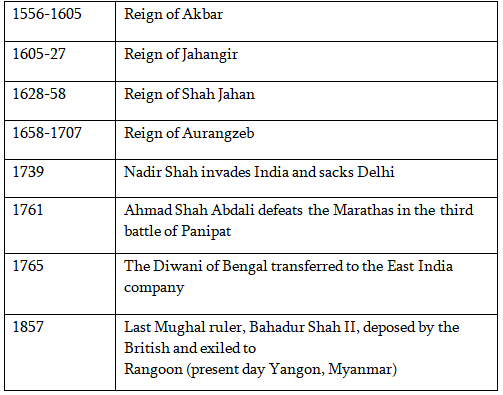JKPSC Prelims Paper 1 Mock Test - 9 - JKPSC KAS (Jammu and Kashmir) MCQ
30 Questions MCQ Test JKPSC Mock Test Series 2025 - JKPSC Prelims Paper 1 Mock Test - 9
Consider the following statements regarding ancient India:
1. The word India comes from the Indus, called Sindhu in Sanskrit.
2. The name Bharata was used for a group of people who lived in the northwest, and who are mentioned in the Rigveda.
Which of the statements given above is/are NOT correct?
What award did NTPC Kanti receive for its CSR initiatives?
Which notable figure was recognized at the 24th International Mother Teresa Awards Ceremony?
For which areas did GRSE win CSR Times Awards?
Which film won the best Asian film at the Septimius Awards 2024?
What is the total number of awards presented during the Rashtriya Vigyan Puraskar -2024 Part 1?
What date was the 24th International Mother Teresa Awards Ceremony held?
Which individual was recognized as the best Asian actor at the 2024 Septimius Awards?
What initiatives did GRSE implement for community welfare?
Which minister presented the award to NTPC Kanti at the Tusker Awards?
Which award was given to Prof. Govindarajan Padmanabhan in 2024?
Who is one of the recipients of the Vigyan Yuva Shanti Swarup Bhatnagar award in the field of Medicine?
What notable achievement did the Rajiv Gandhi International Airport receive?
In which year were the National Geoscience Awards 2023 presented?
How many gold medals did Indian students win at the 17th International Earth Sciences Olympiad?
What award did Dr. Jitendra Singh receive at the ACP India Conference?
Consider The following statements regarding the ‘Imperial Cholas’:
1. Vijayalaya Chola captured the Kaveri delta from Mutharaiyar and built the town of Thanjavur.
2. Rajaraja Iled an expedition to theGangavalley.
3. Rajendra Developed The Navy For expeditions to Sri Lanka and Southeast Asiancountries.
Which of the statements given above is/are Correct?
Which of the following style/school of painting uses gold leaf and gemstones and are mostly created on glass and board?
With reference to the Medieval Indian history, which one among the following events happened earliest?
Which of the following were the major political centres of the Mauryan empire?
1. Tosali
2. Ujjaiyini
3. Manyakhet
4. Taxila
5. Survanagiri
Select the correct answer using the code given below:
The techniques of ‘tessellation’ and ‘pietra dura’ were used in which of the following types of architecture?
Consider the following pairs :
Copper plates - King associated
1. Karantai Copper plates - Rajendra Chola I
2. Kuram copper plates - Nandivarman III
3. Velurpalayam copper plates - Parameshwaravarman
Which of the pairs given above is/are correctly matched ?
Maharaja Sawai Jai Singh II of Amber was a great patron of astronomy. In this context, in which of the following places he built astronomical observatories (Jantar Mantar)?
1. Delhi
2. Jaipur
3. Varanasi
4. Ujjain
5. Mathura
Select the correct answer using the code given below.
Consider the following statements about Vallabhacharya:
1. His philosophy is known as Shuddha Advaita.
2. He propounded the Pustimarga.
3. He was instrumental in establishing
the Srinathji Temple at Nathdwara in Rajasthan.
Which of the statements given above are correct?
Consider the following statements:
1. Mughal court chroniclers wrote inTurkishas it was their mother tongue.
2. Mughals were Chaghtai Turks by origin.
Which of the statements given above is/are Correct?
Which of the following were achievements of Swarajist Activity in Councils?
Vithalbhai Patel was elected speaker of Central Legislative Assembly in 1925.
They exposed the hollowness of the Montford scheme.
Which of the statements given above are correct?
Which of the following statements is/are not correct regarding the early nationalists:
1. They supported foreign capital investment in the country to support industrialization.
2. The drain theory for the first time, was put forward by Romesh Chandra Dutt in The Economic History of India.
3. The economic drain took the form of an excess of exports over imports.
Select the correct answer using the code given Below:
Which of the following were the main provisions of Cornwallis Code?
There was a separation of revenue and justice administration.
European subjects were also brought under jurisdiction.
Government officials were not answerable to the civil courts for actions done in their official capacity.
Select the correct answer using the code given below:
Consider the following statements with reference to the Anglo-Dutch rivalry:
The Anglo-Dutch compromise involved the Dutch withdrawal from the spice islands of Indonesia.
The victory of the British in the Battle of Hooghly led to the final collapse of the Dutch in India.
Which of the statements given above is/are correct?
|
20 tests
|















